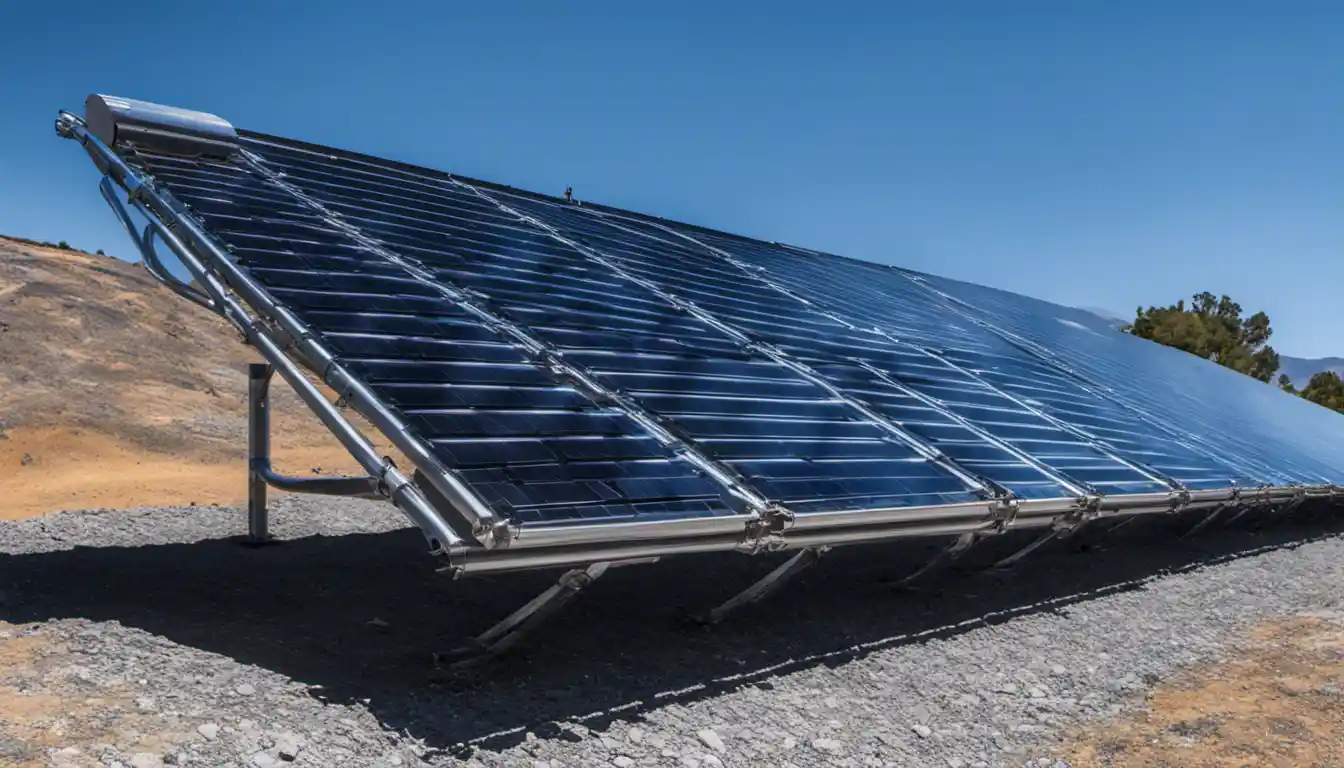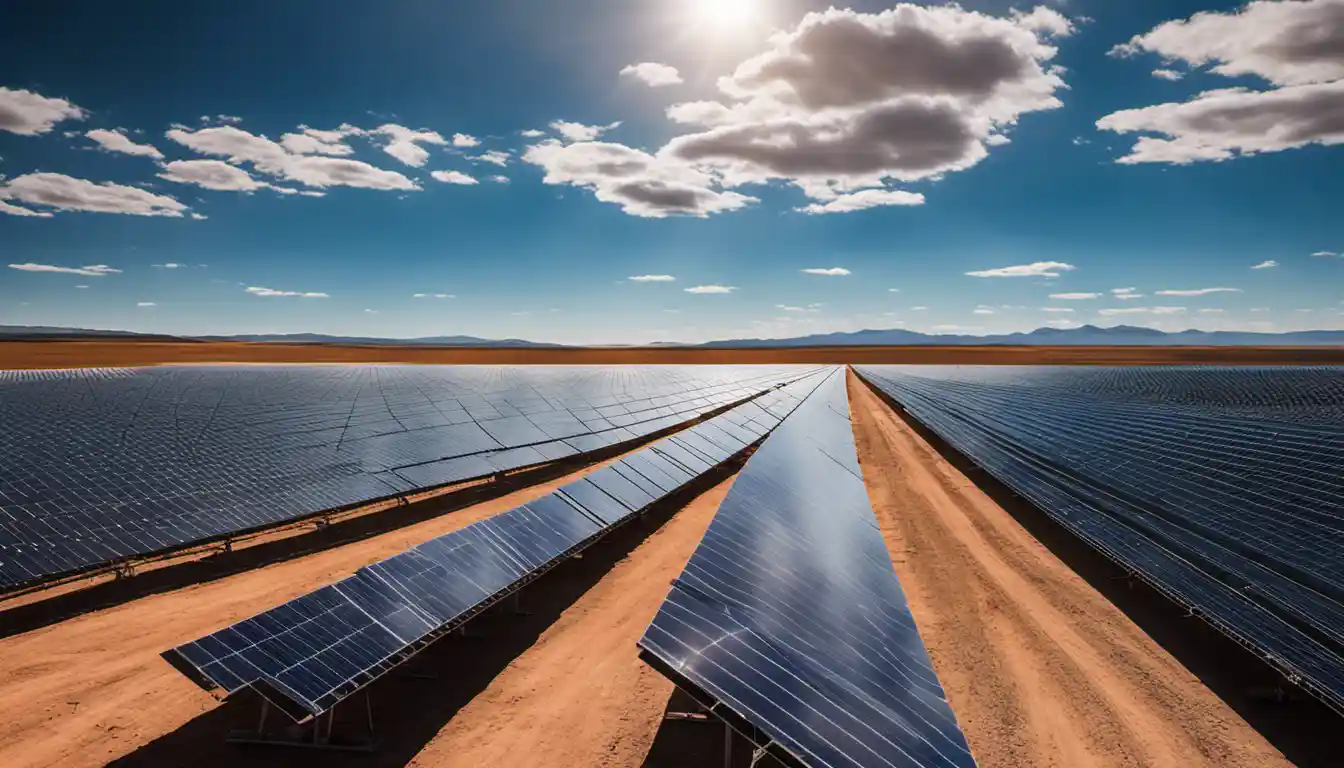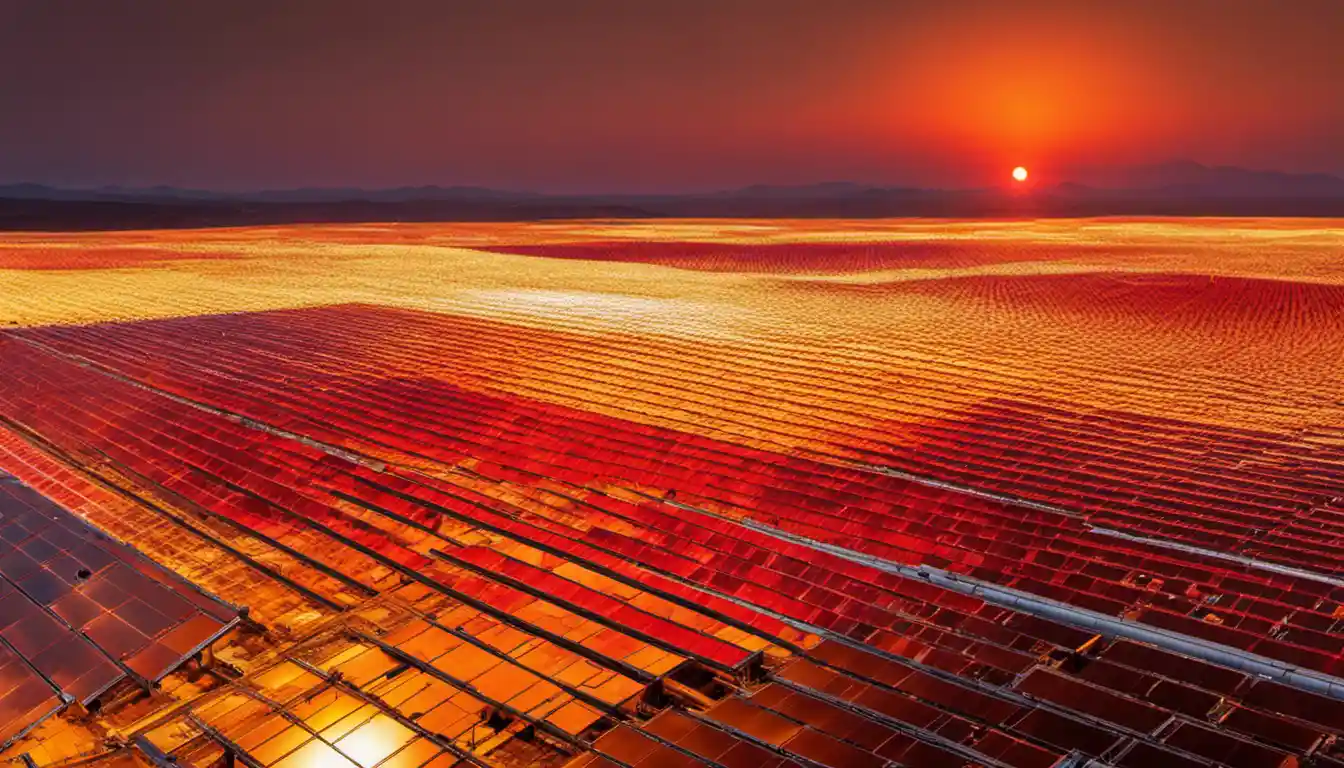Introduction
Solar thermal energy is produced by capturing heat from the sun and converting it into useful energy. This process usually involves the use of solar thermal collectors, such as mirrors or lenses, which concentrate sunlight onto a small area to create heat. It can then be used directly for heating, or it can be converted into mechanical energy and in turn, electricity.
The Basics of Solar Thermal Energy Production
At its core, the production of solar thermal energy involves the conversion of sunlight into high-temperature heat. This process begins when sunlight strikes the surface of a reflector, such as a mirror or a lens. The reflector then directs the sunlight toward a small area known as a “receiver,” where the concentrated sunlight is transformed into heat.
Solar Thermal Power Plant
A solar thermal power plant is a facility designed to convert solar thermal energy into electricity on a large scale. Components of a solar thermal power plant typically include a reflector field (which could involve parabolic troughs, linear Fresnel reflectors, or sun-tracking mirrors), a receiver that collects and converts sunlight into heat, and a power block where the heat is used to generate electricity.
Solar Thermal System

A solar thermal system, on the other hand, is typically used on a smaller scale, such as in homes or businesses. It consists of solar collectors (such as flat-plate collectors or evacuated tube collectors) that absorb solar radiation and convert it into heat, which is then transferred to a heat transfer fluid. This fluid, often water or a kind of antifreeze, carries the heat to where it can be used or stored, for example, to heat water in a storage tank.
Types of Solar Thermal Power Plants
There are mainly three types of solar thermal power plants: concentrating solar power (CSP) plants, linear concentrating systems, and solar power towers.
Concentrating solar power plants use mirrors or lenses to concentrate a large area of sunlight onto a small area. The concentrated heat is then used as a heat source for a conventional power plant. On the other hand, linear concentrating systems, such as parabolic troughs and linear Fresnel reflectors, use long, narrow, curved mirrors that focus the sunlight onto a pipe (also called a linear receiver) running the length of the mirror.
Solar power towers use an array of sun-tracking mirrors, or heliostats, to concentrate sunlight onto a receiver atop a tower, where it is converted into high-temperature heat.
Solar Thermal Heat
Solar thermal heat refers to the heat generated by a solar thermal system. It can be applied to various uses depending on the temperature it achieves. Some use it for space heating and hot water supply in homes, while others use it for drying agricultural products and upgrading low-temperature industrial processes.
Low-Temperature Heating and Cooling

Did you know that you can produce freshwater through solar distillation using solar thermal heat? Moreover, solar-driven cooling and solar heat driven ventilation are becoming increasingly popular in the realm of air conditioning and ventilation. All these applications typically operate at low temperatures, under 100°C.
Medium-Temperature Collectors
Medium-temperature collectors are used in commercial and industrial applications where higher temperatures are needed, at about 100 to 300°C. These applications include solar drying (where solar thermal heat is used to dry products such as wood, fruits, or grains), solar cooking, and freshwater production through solar distillation.
High-Temperature Collectors
High-temperature collectors are a key component in a utility-scale solar thermal power plant. They operate at temperatures above 500°C and produce steam that drives a turbine to generate electricity. The major types of solar thermal power plants that use these collectors include parabolic trough designs, enclosed trough, power tower designs, dish designs, Fresnel technologies, and MicroCSP systems.
Heat Collection and Exchange in Solar Thermal Power Plants

The process of heat collection and exchange in solar thermal power plants is fascinating. The collected heat from the sun is concentrated onto a receiver, which transfers the heat to a heat transfer fluid. This fluid can then be used to generate steam, which, in turn, drives a turbine connected to an electricity generator.
Heat Storage for Electric Base Loads
One big advantage of solar thermal power plants is the possibility to store heat for a later use to produce electricity during cloudy periods or even at night. This is done using different methods such as steam accumulators or molten salt storage. Another interesting solution is phase-change materials for storage, which can absorb or release large amounts of energy.
The Role of Water in Solar Thermal Energy Production
Water plays a crucial role as it serves as a medium for heat transfer in most solar thermal power plants. In these plants, the concentrated sunlight heats up the water, which turns into steam. The steam is then used to drive turbines and generate electricity in a manner quite similar to traditional power plants.
Electrical Conversion Efficiency in Solar Thermal Power Plants
The electrical conversion efficiency in solar thermal power plants is an important factor. It represents the ratio of electrical power output to the total solar power input. This efficiency is steadily increasing with continuous advancements in technology.
When it comes to producing solar thermal energy, it’s all about harnessing the enormous power of the sun and making it work for us in a useful, sustainable way. This fascinating journey from sunlight to usable heat or electricity relies on a range of technologies, from solar collectors in your backyard to enormous solar thermal power plants in vast deserts.
I hope that this guide has provided you with a thorough understanding of how solar thermal energy is produced. For more information on related topics, here’s a helpful resource on solar heating to further augment your understanding.
As always in the world of renewable energy, there’s much more to learn and discover, and I look forward to joining you on that journey. Keep exploring, keep asking questions, and let’s take the power of the sun into our own hands.



